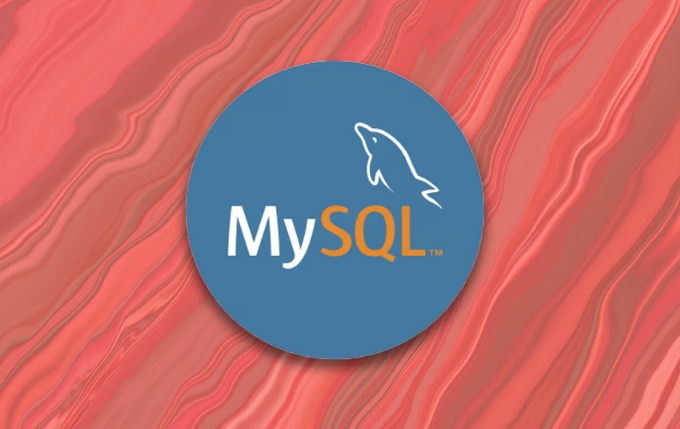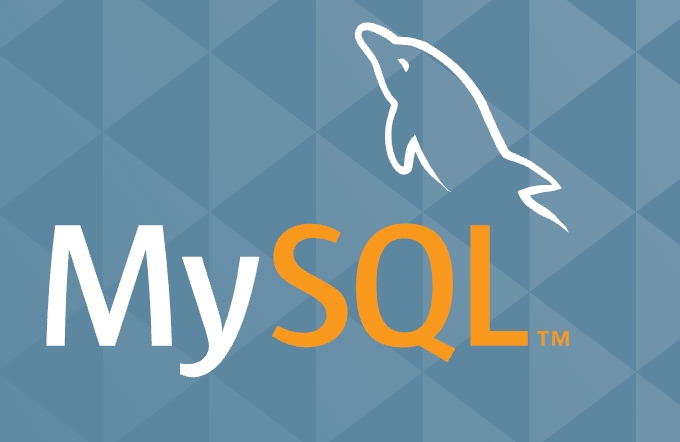mysql error 1045 access denied for user 'root'@'localhost'
Jul 09, 2025 am 02:07 AMMySQL error 1045 encountered: Access denied for user 'root'@'localhost', indicating that authentication failed when connecting to the database. Common reasons and solutions are as follows: 1. Check whether the user name and password are correct. It is recommended to use sudo mysql -u root to log in without password; 2. Confirm that the MySQL service has been started, you can check and start the service through systemctl or brew services; 3. Check the permission configuration, confirm the bind-address and skip-networking settings, and ensure that the root user is allowed to log in from the corresponding host; 4. If you forget your password, you can deactivate MySQL and start in skip-grant-tables mode and reset the password, and finally restart the service.

I encountered MySQL error 1045: Access denied for user 'root'@'localhost' , indicating that you failed to authenticate when you attempt to connect to the database. The most common reason is a username or password error, but there may be other configuration issues.

Here are some common reasons and corresponding solutions that can be investigated step by step:
1. Check whether the username and password are correct
This is the most common problem. If you are sure you are entering the correct password, it may be one of the following:

- The password has been modified but forgotten;
- The logged in user is not
rootor has a misspelling (such as an extra space); - Different authentication methods are used (such as socket authentication instead of password login);
Suggested practices:
-
If it is a local development environment, you can try to enter MySQL to modify the password by using a password-free method;

-
Execute on the command line:
sudo mysql -u root
Then go directly to the MySQL command line and use the following statement to modify the password:
ALTER USER 'root'@'localhost' IDENTIFIED WITH mysql_native_password BY 'Your new password'; FLUSH PRIVILEGES;
2. MySQL service is not started or exception
Sometimes it's not a problem with the account password, but MySQL is not running at all.
How to judge:
Run in the terminal:
systemctl status mysql
Or you can use it on macOS:
brew services list | grep mysql
If you find that the service is not running, start it first:
sudo systemctl start mysql
Then try connecting again.
3. Permission configuration restricts access
Although the prompt is "access denied", sometimes it is not because the password is wrong, but because the permission settings restrict the access of some users.
For example:
- The default
rootuser can only log in through the local socket; - Skip network access is set in the configuration file (such as adding
skip-networking); - Use
bind-addressto limit the connectable IP;
Checkpoint:
Check whether
bind-addressin/etc/mysql/my.cnfor similar configuration files is127.0.0.1or commented out;Confirm that
skip-grant-tablesorskip-networkingis not enabled;If you are a remote connection, confirm that
rootuser allows login from non-localhost (not recommended for production):CREATE USER 'root'@'%' IDENTIFIED BY 'Your Password'; GRANT ALL PRIVILEGES ON *.* TO 'root'@'%' WITH GRANT OPTION; FLUSH PRIVILEGES;
4. How to reset the root password
If you completely forget your password, you can reset it using Safe Mode:
Operation steps:
Stop MySQL service:
sudo systemctl stop mysql
Start MySQL with a skip permission:
sudo mysqld_safe --skip-grant-tables &
Connect to MySQL:
mysql -u root
Execute the password modification statement:
USE mysql; UPDATE user SET authentication_string=PASSWORD('New Password') WHERE User='root'; FLUSH PRIVILEGES;
Restart MySQL:
sudo systemctl restart mysql
Basically these common ways of dealing with it. Just select the corresponding method according to your specific scenario. This type of problem is usually not complicated, but details are easily overlooked, such as service status, configuration file changes, etc.
The above is the detailed content of mysql error 1045 access denied for user 'root'@'localhost'. For more information, please follow other related articles on the PHP Chinese website!

Hot AI Tools

Undress AI Tool
Undress images for free

Undresser.AI Undress
AI-powered app for creating realistic nude photos

AI Clothes Remover
Online AI tool for removing clothes from photos.

Clothoff.io
AI clothes remover

Video Face Swap
Swap faces in any video effortlessly with our completely free AI face swap tool!

Hot Article

Hot Tools

Notepad++7.3.1
Easy-to-use and free code editor

SublimeText3 Chinese version
Chinese version, very easy to use

Zend Studio 13.0.1
Powerful PHP integrated development environment

Dreamweaver CS6
Visual web development tools

SublimeText3 Mac version
God-level code editing software (SublimeText3)

Hot Topics
 How to install MySQL 8.0 on Windows/Linux?
Jun 11, 2025 pm 03:25 PM
How to install MySQL 8.0 on Windows/Linux?
Jun 11, 2025 pm 03:25 PM
The key to installing MySQL 8.0 is to follow the steps and pay attention to common problems. It is recommended to use the MSI installation package on Windows. The steps include downloading the installation package, running the installer, selecting the installation type, setting the root password, enabling service startup, and paying attention to port conflicts or manually configuring the ZIP version; Linux (such as Ubuntu) is installed through apt, and the steps are to update the source, installing the server, running security scripts, checking service status, and modifying the root authentication method; no matter which platform, you should modify the default password, create ordinary users, set up firewalls, adjust configuration files to optimize character sets and other parameters to ensure security and normal use.
 How to enable SSL/TLS encryption for MySQL connections?
Jun 11, 2025 pm 03:29 PM
How to enable SSL/TLS encryption for MySQL connections?
Jun 11, 2025 pm 03:29 PM
Enable MySQL's SSL/TLS encryption connection can effectively prevent data leakage. The specific steps are as follows: 1. Confirm that the MySQL version supports SSL, and check whether the return value is YES through SHOWVARIABLESLIKE'have_ssl'; 2. Prepare a PEM format certificate file (ca.pem, server-cert.pem, server-key.pem), which can be generated through OpenSSL or obtained from CA; 3. Modify the MySQL configuration file, add ssl-ca, ssl-cert and ssl-key paths in the [mysqld] section and restart the service; 4. Force the client to use SSL, and use CREATEUSER
 What is the default username and password for MySQL?
Jun 13, 2025 am 12:34 AM
What is the default username and password for MySQL?
Jun 13, 2025 am 12:34 AM
The default user name of MySQL is usually 'root', but the password varies according to the installation environment; in some Linux distributions, the root account may be authenticated by auth_socket plug-in and cannot log in with the password; when installing tools such as XAMPP or WAMP under Windows, root users usually have no password or use common passwords such as root, mysql, etc.; if you forget the password, you can reset it by stopping the MySQL service, starting in --skip-grant-tables mode, updating the mysql.user table to set a new password and restarting the service; note that the MySQL8.0 version requires additional authentication plug-ins.
 What is the MySQL binary log (binlog) and what is it used for?
Jun 11, 2025 pm 03:41 PM
What is the MySQL binary log (binlog) and what is it used for?
Jun 11, 2025 pm 03:41 PM
MySQL's binary log (binlog) is a binary log that records database change operations, and is used in scenarios such as data recovery, master-slave replication and auditing. 1. Binlog is a logical log file that records all operation events that modify data, such as INSERT, UPDATE, DELETE, etc., but does not include SELECT or SHOW query statements; 2. Its main uses include: data recovery through replay logs, supporting master-slave copying to achieve data synchronization, and used to analyze operation records to meet audit requirements; 3. Enable binlog requires setting log-bin, server-id, binlog_format and expire_logs_day in the configuration file.
 How to change or reset the MySQL root user password?
Jun 13, 2025 am 12:33 AM
How to change or reset the MySQL root user password?
Jun 13, 2025 am 12:33 AM
There are three ways to modify or reset MySQLroot user password: 1. Use the ALTERUSER command to modify existing passwords, and execute the corresponding statement after logging in; 2. If you forget your password, you need to stop the service and start it in --skip-grant-tables mode before modifying; 3. The mysqladmin command can be used to modify it directly by modifying it. Each method is suitable for different scenarios and the operation sequence must not be messed up. After the modification is completed, verification must be made and permission protection must be paid attention to.
 What is GTID (Global Transaction Identifier) and what are its advantages?
Jun 19, 2025 am 01:03 AM
What is GTID (Global Transaction Identifier) and what are its advantages?
Jun 19, 2025 am 01:03 AM
GTID (Global Transaction Identifier) ??solves the complexity of replication and failover in MySQL databases by assigning a unique identity to each transaction. 1. It simplifies replication management, automatically handles log files and locations, allowing slave servers to request transactions based on the last executed GTID. 2. Ensure consistency across servers, ensure that each transaction is applied only once on each server, and avoid data inconsistency. 3. Improve troubleshooting efficiency. GTID includes server UUID and serial number, which is convenient for tracking transaction flow and accurately locate problems. These three core advantages make MySQL replication more robust and easy to manage, significantly improving system reliability and data integrity.
 What is a typical process for MySQL master failover?
Jun 19, 2025 am 01:06 AM
What is a typical process for MySQL master failover?
Jun 19, 2025 am 01:06 AM
MySQL main library failover mainly includes four steps. 1. Fault detection: Regularly check the main library process, connection status and simple query to determine whether it is downtime, set up a retry mechanism to avoid misjudgment, and can use tools such as MHA, Orchestrator or Keepalived to assist in detection; 2. Select the new main library: select the most suitable slave library to replace it according to the data synchronization progress (Seconds_Behind_Master), binlog data integrity, network delay and load conditions, and perform data compensation or manual intervention if necessary; 3. Switch topology: Point other slave libraries to the new master library, execute RESETMASTER or enable GTID, update the VIP, DNS or proxy configuration to
 How to alter a large table without locking it (Online DDL)?
Jun 14, 2025 am 12:36 AM
How to alter a large table without locking it (Online DDL)?
Jun 14, 2025 am 12:36 AM
Toalteralargeproductiontablewithoutlonglocks,useonlineDDLtechniques.1)IdentifyifyourALTERoperationisfast(e.g.,adding/droppingcolumns,modifyingNULL/NOTNULL)orslow(e.g.,changingdatatypes,reorderingcolumns,addingindexesonlargedata).2)Usedatabase-specifi







